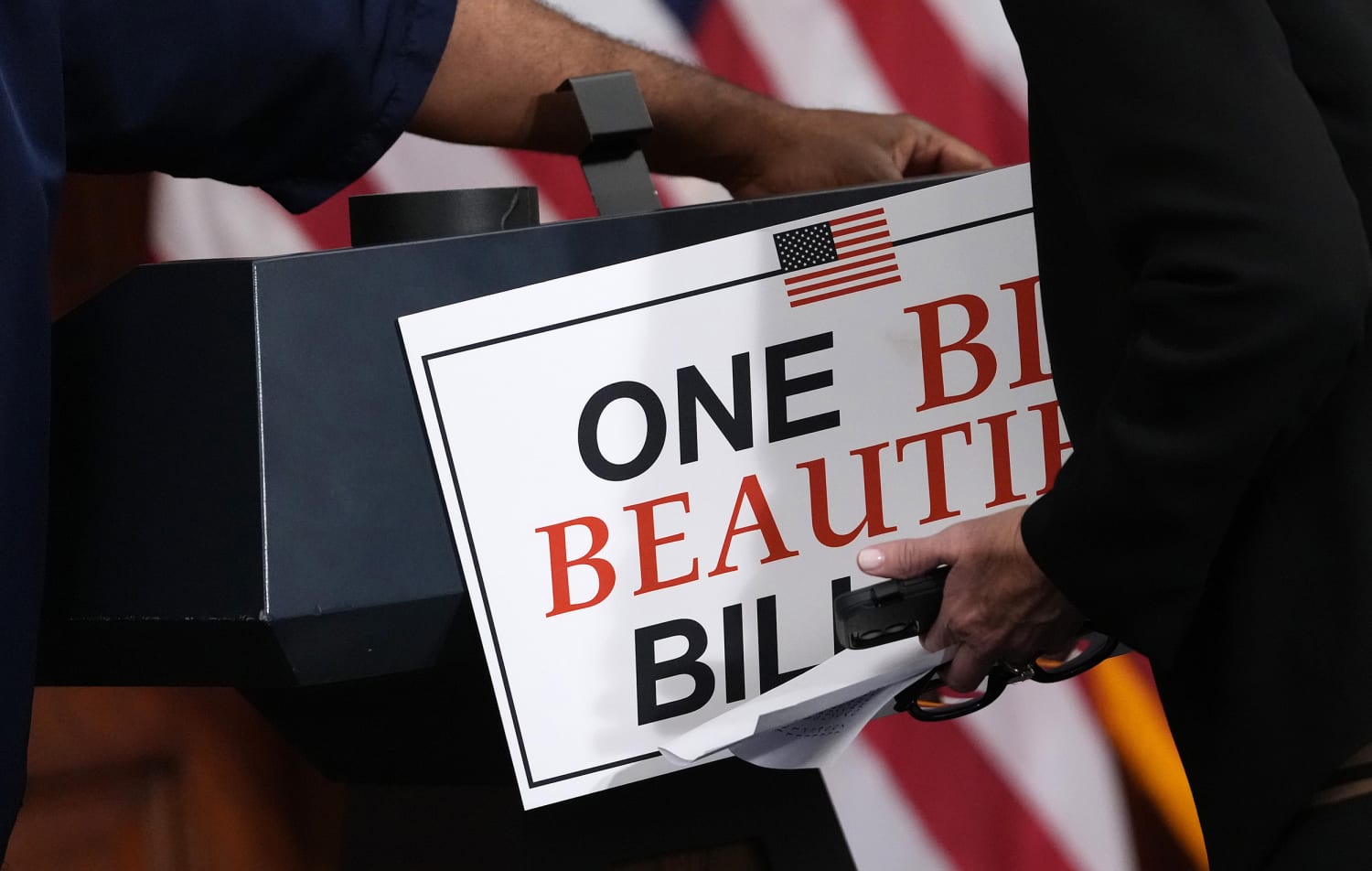
US Stablecoin Bill (GENIUS Act) nears passage, promising enhanced regulation, stability, and investor confidence. Analyze its impact on the cryptocurrency market and financial future.

The United States is on the cusp of a landmark decision that could reshape the global cryptocurrency landscape: the enactment of comprehensive stablecoin legislation. As of Wednesday, June 11, 2025, significant progress has been made, with the Senate’s leading bill, the “Guiding and Establishing National Innovation for U.S. Stablecoins Act” (GENIUS Act), clearing a crucial procedural hurdle, moving it closer to a final vote. This article delves into the latest developments surrounding this pivotal legislation, analyzing its key provisions, potential implications for stablecoin stability and regulation, and its broader impact on the cryptocurrency market, financial regulation, and investor confidence. We will also explore its significance within the context of evolving financial and technological trends, drawing on the most current and relevant information.
Today, June 11, 2025, marks a pivotal moment for stablecoin regulation in the U.S. The Senate’s GENIUS Act (S.919), championed by Senator Bill Hagerty (R-TN), successfully navigated a critical 68-30 procedural vote (cloture), effectively overcoming the threat of a filibuster and setting the stage for a final vote as early as next week. This bipartisan support signals a strong congressional appetite to bring clarity to the burgeoning stablecoin market.
Senate Majority Leader John Thune (R-SD) has expressed his intent to push for rapid passage, highlighting the urgency to establish a clear regulatory framework for digital assets and position the U.S. as a leader in the digital economy. Senator Hagerty, the bill’s sponsor, emphasized that the GENIUS Act aims to create a comprehensive regulatory structure that will protect consumers, foster innovation, streamline cross-border payments, enhance capital market efficiencies, and boost demand for U.S. Treasuries. He warned that inaction could lead to the U.S. falling behind in global competitiveness, with stablecoin innovation flourishing overseas.
However, the bill’s journey is not without its detractors. Senator Elizabeth Warren (D-MA) remains a staunch opponent, articulating concerns that the current iteration of the GENIUS Act poses significant threats to the nation’s financial system, national security, and democratic integrity. According to PYMNTS.com, Senator Warren argues the bill could facilitate corruption, enable conglomerates to exert undue control over the money supply, drain deposits from community banks, and increase avenues for illicit financial activities and consumer scams. Her criticisms extend to the bill’s alleged permissiveness, allowing stablecoin issuers to invest in risky assets and engage in non-stablecoin activities like private credit or derivatives trading, while simultaneously constraining regulators’ ability to impose adequate capital and liquidity safeguards. She also publicly accused Republicans of reneging on promises to allow for amendments, a sentiment echoed by other Democrats who decried the swift pace of the bill’s advancement without sufficient opportunity for modification.
Beyond the Senate, the House of Representatives is also actively pursuing digital asset legislation. While the Senate focuses on the GENIUS Act for stablecoins, the House recently advanced the “CLARITY Act,” a broader bill establishing a regulatory framework for digital assets beyond just stablecoins. Additionally, a companion House bill specifically targeting stablecoins, known as the “STABLE Act,” remains under consideration by the Financial Services Committee. This parallel legislative activity underscores a shared commitment across both chambers to address digital asset regulation, albeit with different approaches and focuses. The discussions have also brought to light concerns regarding potential conflicts of interest, particularly in light of President Donald Trump’s affiliated ventures launching stablecoins and building Bitcoin treasuries, raising questions about the need for clearer ethical guardrails within the legislation.
The GENIUS Act in the Senate and the STABLE Act in the House, while having some differences, share core principles aimed at establishing a robust regulatory framework for payment stablecoins. Understanding these provisions is crucial to grasping the potential impact of the legislation.
Both bills seek to provide a clear legal definition for “payment stablecoins.” A payment stablecoin is generally defined as a digital asset issued for the purpose of payment or settlement, where the issuer is obligated to convert, redeem, or repurchase it for a fixed amount of monetary value. Crucially, the legislation explicitly states that a payment stablecoin is not to be considered a security, a commodity, a national currency, a deposit, or an interest-bearing instrument. This clarification is a significant step towards resolving long-standing jurisdictional ambiguities in the U.S. regulatory landscape, aiming to carve out a distinct regulatory category for stablecoins separate from traditional securities or commodities. The House’s STABLE Act further clarifies that a payment stablecoin must be denominated in a national currency.
The legislation proposes a regulatory and enforcement regime to authorize “Permitted Payment Stablecoin Issuers” (PPSIs). Under the proposed framework, institutions seeking to issue stablecoins would need to register as a PPSI with an appropriate regulatory agency. Eligible entities would include:
A critical restriction under both bills is that PPSIs would generally be limited to activities directly supporting the issuance, redemption, management, and safekeeping of stablecoins, along with other functions explicitly permitted by their primary regulator.
A cornerstone of the proposed legislation is the mandate for strict reserve requirements to ensure stablecoin stability and redeemability. Both bills require PPSIs to maintain reserves backing all outstanding payment stablecoins on a one-to-one basis. These reserves must be held in highly safe and liquid assets, specifically limited to:
The intent is to prevent the kind of de-pegging events seen with algorithmic stablecoins or those backed by riskier, less liquid assets.
To ensure transparency and accountability, the bills mandate comprehensive reporting and auditing requirements for PPSIs:
The legislation proposes a multi-layered regulatory structure with both federal and state components. Federally licensed issuers, or those with more than $10 billion in issuance, would generally be supervised by federal regulators such as the OCC, Federal Reserve, or FDIC, depending on the issuer’s type. State-licensed issuers would primarily be regulated by their respective state authorities, though federal regulators would have backup enforcement authority in “exigent circumstances.” The Treasury’s Financial Crimes Enforcement Network (FinCEN) would also play a significant role.
The bills include provisions aimed at safeguarding consumers and preventing illicit activities:
The legislation also addresses the custody of stablecoin assets and reserve, prohibiting custodians from commingling customer funds with their own. It clarifies that banks are permitted to custody stablecoins and reserve assets, use blockchains, and issue tokenized deposits. In the event of an issuer’s bankruptcy, stablecoin holders would be granted priority over other claims, with updates to the bankruptcy code to reflect this.
The bills also consider the global nature of stablecoins. Non-compliant foreign issuers may be barred from U.S. markets. Conversely, stablecoins from qualifying jurisdictions with the technical capacity to freeze transactions and comply with lawful orders could be permitted to be traded in the U.S., fostering interoperability and extending U.S. financial sovereignty into the digital realm.

The passage of comprehensive stablecoin legislation would send ripples across the entire financial ecosystem.
The most immediate and significant impact would be a dramatic enhancement in the stability and regulatory oversight of stablecoins. The mandated 1:1 backing with highly liquid assets, coupled with rigorous auditing and reporting, aims to prevent the catastrophic de-pegging events that have shaken investor confidence in the past, such as the collapse of TerraUSD. This framework would instill a much-needed layer of trust and reliability in an asset class that has sometimes been perceived as opaque and risky.
The move from a patchwork of state-level regulations to a unified federal framework would provide unprecedented clarity. This regulatory certainty is expected to attract more traditional financial institutions (TradFi) into the stablecoin space, enabling them to explore use cases with greater confidence. However, challenges may arise in reconciling the federal and state oversight roles, particularly for smaller issuers opting for state regulation. The debate over the prohibition of yield-bearing stablecoins also highlights an area where legislative intent might clash with market demand and innovation.
A well-regulated stablecoin market could serve as a powerful catalyst for the broader cryptocurrency industry’s mainstream adoption. Stablecoins currently function as the bedrock of the crypto economy, providing a stable medium of exchange that facilitates trading and transfers between more volatile cryptocurrencies like Bitcoin and Ethereum. By providing clear rules and reducing perceived risks, the legislation could:
The proposed stablecoin bill represents a significant expansion of federal oversight into a relatively nascent but rapidly growing segment of the financial system.
For investors, the stablecoin bill is largely seen as a positive development that could significantly bolster confidence in the digital asset market.
The stablecoin bill is not an isolated piece of legislation but rather a critical component in the broader evolution of finance and technology.
The proposed stablecoin bill, particularly the GENIUS Act moving swiftly through the Senate, represents a watershed moment for the U.S. financial system and the global cryptocurrency market. While debates continue over specific provisions and potential unintended consequences, the overarching goal is clear: to establish a comprehensive, transparent, and secure regulatory framework for stablecoins.
Today’s procedural vote in the Senate brings the U.S. closer than ever to achieving this clarity. If enacted, the legislation promises to enhance the stability of stablecoins, foster greater integration of digital assets into mainstream finance, bolster investor confidence through increased transparency and consumer protections, and solidify the U.S.’s position as a leader in the rapidly evolving digital economy. As the bill progresses towards a final vote, its passage would not only mark a legislative triumph but also signal a significant maturation of the digital asset industry, paving the way for stablecoins to fulfill their potential as a foundational element of future global payments and financial innovation. The implications are profound, promising a new era of regulated stability and accelerated adoption for digital dollars.

Trump administration takes historic $8.9 billion stake in Intel, acquiring 10% ownership amid bipartisan criticism and concerns over government intervention in private enterprise.

AppLovin posted record Q2 2025 results, with 77% revenue growth, higher margins, and a strategic shift toward core adtech platforms.

Discover how the Big Beautiful Bill reshapes taxes, healthcare, and national spending in 2025. Explore its impacts on personal finances, federal debt, and everyday life in this comprehensive analysis.
US Stablecoin Bill (GENIUS Act) nears passage, promising enhanced regulation, stability, and investor confidence. Analyze its impact on the cryptocurrency market and financial future.

The United States is on the cusp of a landmark decision that could reshape the global cryptocurrency landscape: the enactment of comprehensive stablecoin legislation. As of Wednesday, June 11, 2025, significant progress has been made, with the Senate’s leading bill, the “Guiding and Establishing National Innovation for U.S. Stablecoins Act” (GENIUS Act), clearing a crucial procedural hurdle, moving it closer to a final vote. This article delves into the latest developments surrounding this pivotal legislation, analyzing its key provisions, potential implications for stablecoin stability and regulation, and its broader impact on the cryptocurrency market, financial regulation, and investor confidence. We will also explore its significance within the context of evolving financial and technological trends, drawing on the most current and relevant information.
Today, June 11, 2025, marks a pivotal moment for stablecoin regulation in the U.S. The Senate’s GENIUS Act (S.919), championed by Senator Bill Hagerty (R-TN), successfully navigated a critical 68-30 procedural vote (cloture), effectively overcoming the threat of a filibuster and setting the stage for a final vote as early as next week. This bipartisan support signals a strong congressional appetite to bring clarity to the burgeoning stablecoin market.
Senate Majority Leader John Thune (R-SD) has expressed his intent to push for rapid passage, highlighting the urgency to establish a clear regulatory framework for digital assets and position the U.S. as a leader in the digital economy. Senator Hagerty, the bill’s sponsor, emphasized that the GENIUS Act aims to create a comprehensive regulatory structure that will protect consumers, foster innovation, streamline cross-border payments, enhance capital market efficiencies, and boost demand for U.S. Treasuries. He warned that inaction could lead to the U.S. falling behind in global competitiveness, with stablecoin innovation flourishing overseas.
However, the bill’s journey is not without its detractors. Senator Elizabeth Warren (D-MA) remains a staunch opponent, articulating concerns that the current iteration of the GENIUS Act poses significant threats to the nation’s financial system, national security, and democratic integrity. According to PYMNTS.com, Senator Warren argues the bill could facilitate corruption, enable conglomerates to exert undue control over the money supply, drain deposits from community banks, and increase avenues for illicit financial activities and consumer scams. Her criticisms extend to the bill’s alleged permissiveness, allowing stablecoin issuers to invest in risky assets and engage in non-stablecoin activities like private credit or derivatives trading, while simultaneously constraining regulators’ ability to impose adequate capital and liquidity safeguards. She also publicly accused Republicans of reneging on promises to allow for amendments, a sentiment echoed by other Democrats who decried the swift pace of the bill’s advancement without sufficient opportunity for modification.
Beyond the Senate, the House of Representatives is also actively pursuing digital asset legislation. While the Senate focuses on the GENIUS Act for stablecoins, the House recently advanced the “CLARITY Act,” a broader bill establishing a regulatory framework for digital assets beyond just stablecoins. Additionally, a companion House bill specifically targeting stablecoins, known as the “STABLE Act,” remains under consideration by the Financial Services Committee. This parallel legislative activity underscores a shared commitment across both chambers to address digital asset regulation, albeit with different approaches and focuses. The discussions have also brought to light concerns regarding potential conflicts of interest, particularly in light of President Donald Trump’s affiliated ventures launching stablecoins and building Bitcoin treasuries, raising questions about the need for clearer ethical guardrails within the legislation.
The GENIUS Act in the Senate and the STABLE Act in the House, while having some differences, share core principles aimed at establishing a robust regulatory framework for payment stablecoins. Understanding these provisions is crucial to grasping the potential impact of the legislation.
Both bills seek to provide a clear legal definition for “payment stablecoins.” A payment stablecoin is generally defined as a digital asset issued for the purpose of payment or settlement, where the issuer is obligated to convert, redeem, or repurchase it for a fixed amount of monetary value. Crucially, the legislation explicitly states that a payment stablecoin is not to be considered a security, a commodity, a national currency, a deposit, or an interest-bearing instrument. This clarification is a significant step towards resolving long-standing jurisdictional ambiguities in the U.S. regulatory landscape, aiming to carve out a distinct regulatory category for stablecoins separate from traditional securities or commodities. The House’s STABLE Act further clarifies that a payment stablecoin must be denominated in a national currency.
The legislation proposes a regulatory and enforcement regime to authorize “Permitted Payment Stablecoin Issuers” (PPSIs). Under the proposed framework, institutions seeking to issue stablecoins would need to register as a PPSI with an appropriate regulatory agency. Eligible entities would include:
A critical restriction under both bills is that PPSIs would generally be limited to activities directly supporting the issuance, redemption, management, and safekeeping of stablecoins, along with other functions explicitly permitted by their primary regulator.
A cornerstone of the proposed legislation is the mandate for strict reserve requirements to ensure stablecoin stability and redeemability. Both bills require PPSIs to maintain reserves backing all outstanding payment stablecoins on a one-to-one basis. These reserves must be held in highly safe and liquid assets, specifically limited to:
The intent is to prevent the kind of de-pegging events seen with algorithmic stablecoins or those backed by riskier, less liquid assets.
To ensure transparency and accountability, the bills mandate comprehensive reporting and auditing requirements for PPSIs:
The legislation proposes a multi-layered regulatory structure with both federal and state components. Federally licensed issuers, or those with more than $10 billion in issuance, would generally be supervised by federal regulators such as the OCC, Federal Reserve, or FDIC, depending on the issuer’s type. State-licensed issuers would primarily be regulated by their respective state authorities, though federal regulators would have backup enforcement authority in “exigent circumstances.” The Treasury’s Financial Crimes Enforcement Network (FinCEN) would also play a significant role.
The bills include provisions aimed at safeguarding consumers and preventing illicit activities:
The legislation also addresses the custody of stablecoin assets and reserve, prohibiting custodians from commingling customer funds with their own. It clarifies that banks are permitted to custody stablecoins and reserve assets, use blockchains, and issue tokenized deposits. In the event of an issuer’s bankruptcy, stablecoin holders would be granted priority over other claims, with updates to the bankruptcy code to reflect this.
The bills also consider the global nature of stablecoins. Non-compliant foreign issuers may be barred from U.S. markets. Conversely, stablecoins from qualifying jurisdictions with the technical capacity to freeze transactions and comply with lawful orders could be permitted to be traded in the U.S., fostering interoperability and extending U.S. financial sovereignty into the digital realm.

The passage of comprehensive stablecoin legislation would send ripples across the entire financial ecosystem.
The most immediate and significant impact would be a dramatic enhancement in the stability and regulatory oversight of stablecoins. The mandated 1:1 backing with highly liquid assets, coupled with rigorous auditing and reporting, aims to prevent the catastrophic de-pegging events that have shaken investor confidence in the past, such as the collapse of TerraUSD. This framework would instill a much-needed layer of trust and reliability in an asset class that has sometimes been perceived as opaque and risky.
The move from a patchwork of state-level regulations to a unified federal framework would provide unprecedented clarity. This regulatory certainty is expected to attract more traditional financial institutions (TradFi) into the stablecoin space, enabling them to explore use cases with greater confidence. However, challenges may arise in reconciling the federal and state oversight roles, particularly for smaller issuers opting for state regulation. The debate over the prohibition of yield-bearing stablecoins also highlights an area where legislative intent might clash with market demand and innovation.
A well-regulated stablecoin market could serve as a powerful catalyst for the broader cryptocurrency industry’s mainstream adoption. Stablecoins currently function as the bedrock of the crypto economy, providing a stable medium of exchange that facilitates trading and transfers between more volatile cryptocurrencies like Bitcoin and Ethereum. By providing clear rules and reducing perceived risks, the legislation could:
The proposed stablecoin bill represents a significant expansion of federal oversight into a relatively nascent but rapidly growing segment of the financial system.
For investors, the stablecoin bill is largely seen as a positive development that could significantly bolster confidence in the digital asset market.
The stablecoin bill is not an isolated piece of legislation but rather a critical component in the broader evolution of finance and technology.
The proposed stablecoin bill, particularly the GENIUS Act moving swiftly through the Senate, represents a watershed moment for the U.S. financial system and the global cryptocurrency market. While debates continue over specific provisions and potential unintended consequences, the overarching goal is clear: to establish a comprehensive, transparent, and secure regulatory framework for stablecoins.
Today’s procedural vote in the Senate brings the U.S. closer than ever to achieving this clarity. If enacted, the legislation promises to enhance the stability of stablecoins, foster greater integration of digital assets into mainstream finance, bolster investor confidence through increased transparency and consumer protections, and solidify the U.S.’s position as a leader in the rapidly evolving digital economy. As the bill progresses towards a final vote, its passage would not only mark a legislative triumph but also signal a significant maturation of the digital asset industry, paving the way for stablecoins to fulfill their potential as a foundational element of future global payments and financial innovation. The implications are profound, promising a new era of regulated stability and accelerated adoption for digital dollars.

Trump administration takes historic $8.9 billion stake in Intel, acquiring 10% ownership amid bipartisan criticism and concerns over government intervention in private enterprise.

AppLovin posted record Q2 2025 results, with 77% revenue growth, higher margins, and a strategic shift toward core adtech platforms.

Discover how the Big Beautiful Bill reshapes taxes, healthcare, and national spending in 2025. Explore its impacts on personal finances, federal debt, and everyday life in this comprehensive analysis.

Figma’s S-1 filing reveals a company in hyper-growth, with revenue reaching $700 million, gearing up to IPO on the NYSE.
